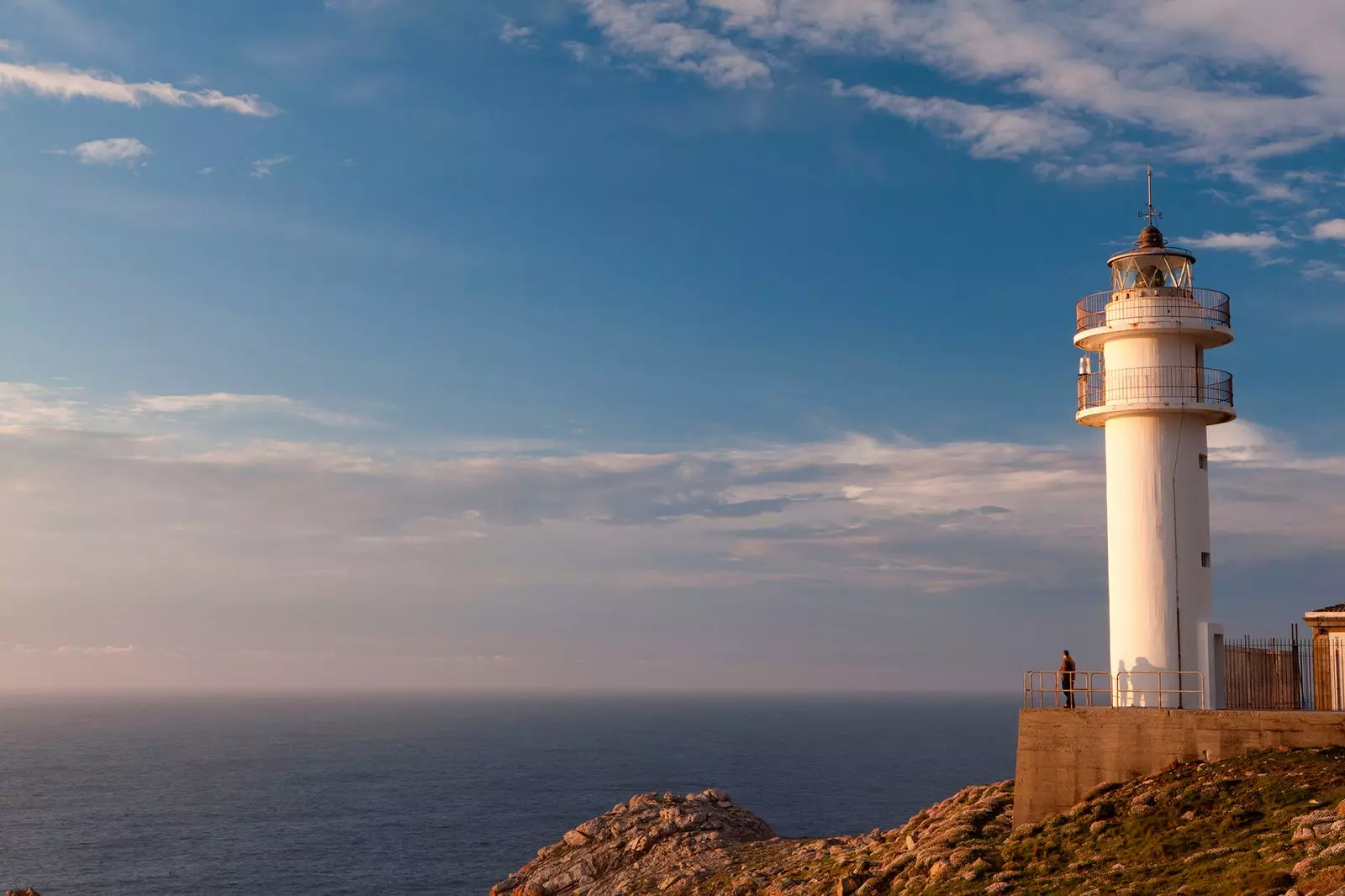
The westernmost horizon of the Iberian Peninsula
This is such a magical destination that it can only be reached twice a year : An A early spring and another road end of summer . yes, for travel to Touriñán , the westernmost point of mainland Spain, it is recommended to always check the calendar. Not because its majestic Atlantic landscapes are not worth it at any time, but because only for a few days a year you can enjoy here the last sunset in continental Europe.
A stone bench, following the example of the one installed in Loiba and baptized as the "most beautiful in the world", announces that one has reached their destination: 43°03’ N 9°18’ W . A text engraved on the bench itself makes it known that this it is the place where the sun wins for the last time before the mare tenebrosum.
In reality, and due to the changing inclination of the earth's axis of rotation with respect to the sun, this only happens for two months of the year , about between March 24 and April 23 , And in summer between August 18 and September 19.
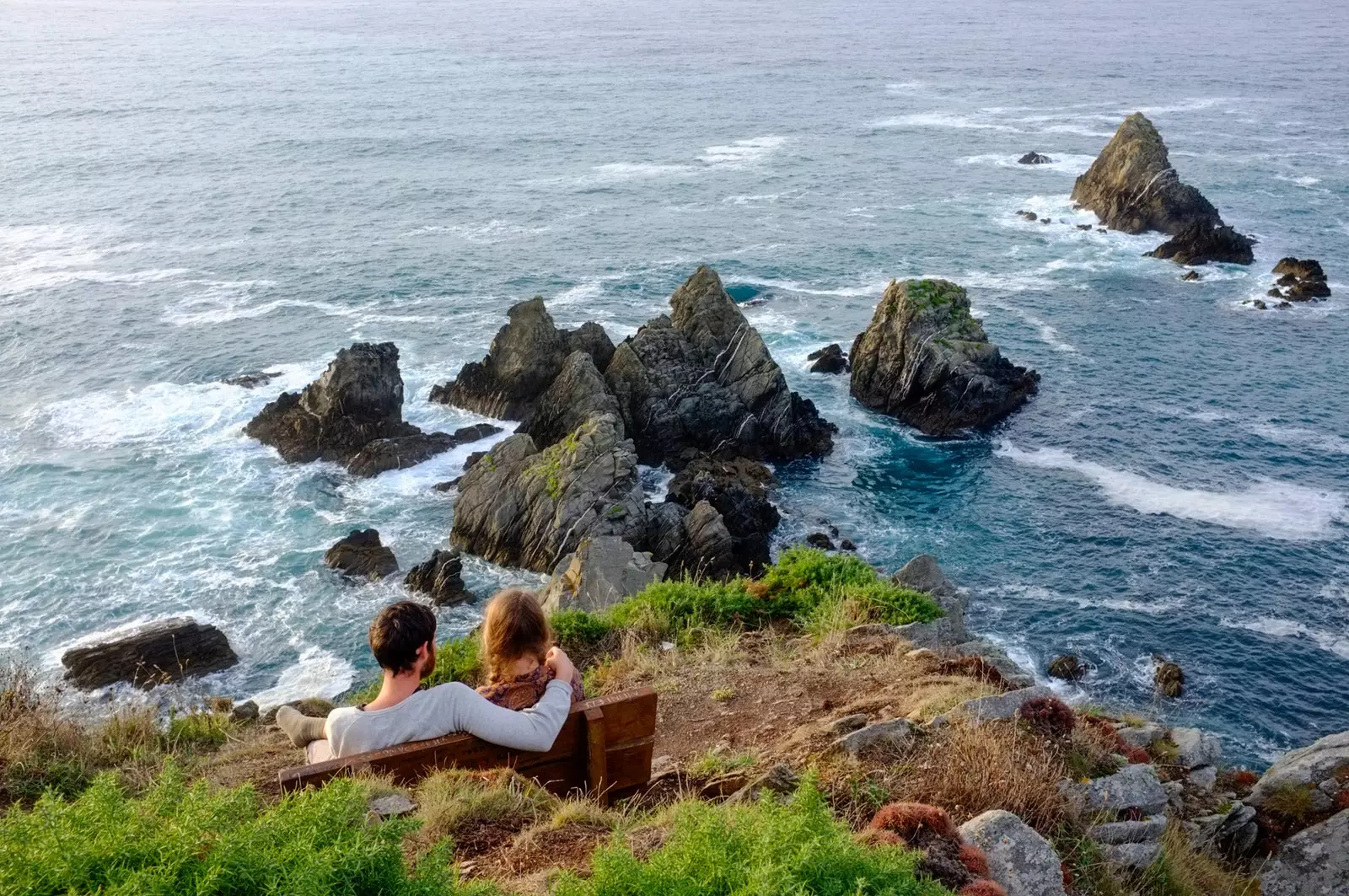
Loiba Bank, Ortigueira
The finis solis dances with the seasons: between the winter and summer solstice moves from Cape São Vicente (Portugal) to Cape Roca, Cape Touriñán and finally to the Norwegian coast, to Aglapsvik, near Tromsø, and finally to Måsøy. On August 1, the sun begins its return journey to Cabo São Vicente.
On April 24 and August 18, when the sun moves from Touriñán to Aglapsvik, there is a magical wink, collected in his sunset geography by the physics professor at the University of Santiago de Compostela George Mira : the last sunset in mainland Europe coincides with the last twilight in mainland Africa, which on those days occurs near Cape White (20°50' N 17°06' W) in the border between Western Sahara and Mauritania . Neither of them is the westernmost point of their continent: it is the peninsula of the Cape Verde (Senegal) in Africa and Cape Roca (Portugal) in Europe . But the juggling of the earth give us this curiosity and a wonderful route for lovers of chasing sunsets.
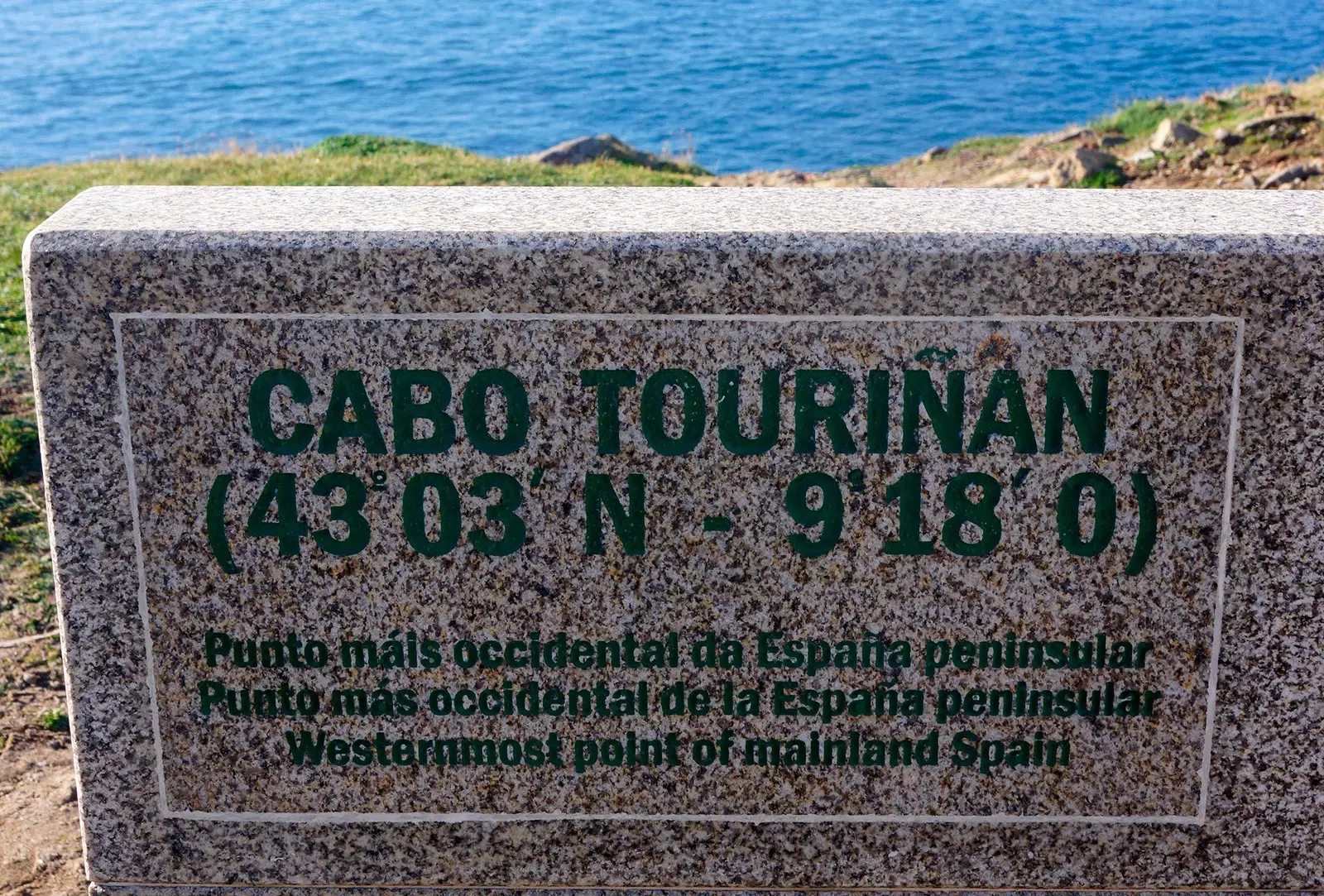
Touri n: the westernmost point of mainland Spain
AND WHAT DO WE DO UNTIL THEN?
The obsession with sunsets is not a modern invention. After conquering Gallaecia, the Roman general Galician Gross June Tenth (180 BC–113 BC) climbed to the top of the Nerium Promontorium to contemplate the Finis Terrae.
To that same point where thousands of pilgrims and tourists flock today to put an end to the Camino de Santiago and that even before the arrival of the Romans was already the place where sun worship.
There are innumerable legends that speak of a ara solis that the Christians turned into the Hermitage of San Guillermo . What neither of them knew was that in reality Finisterre was not the westernmost point of To Costa da Morte , but this one is 25 kilometers to the north, in Cape Touriñán.
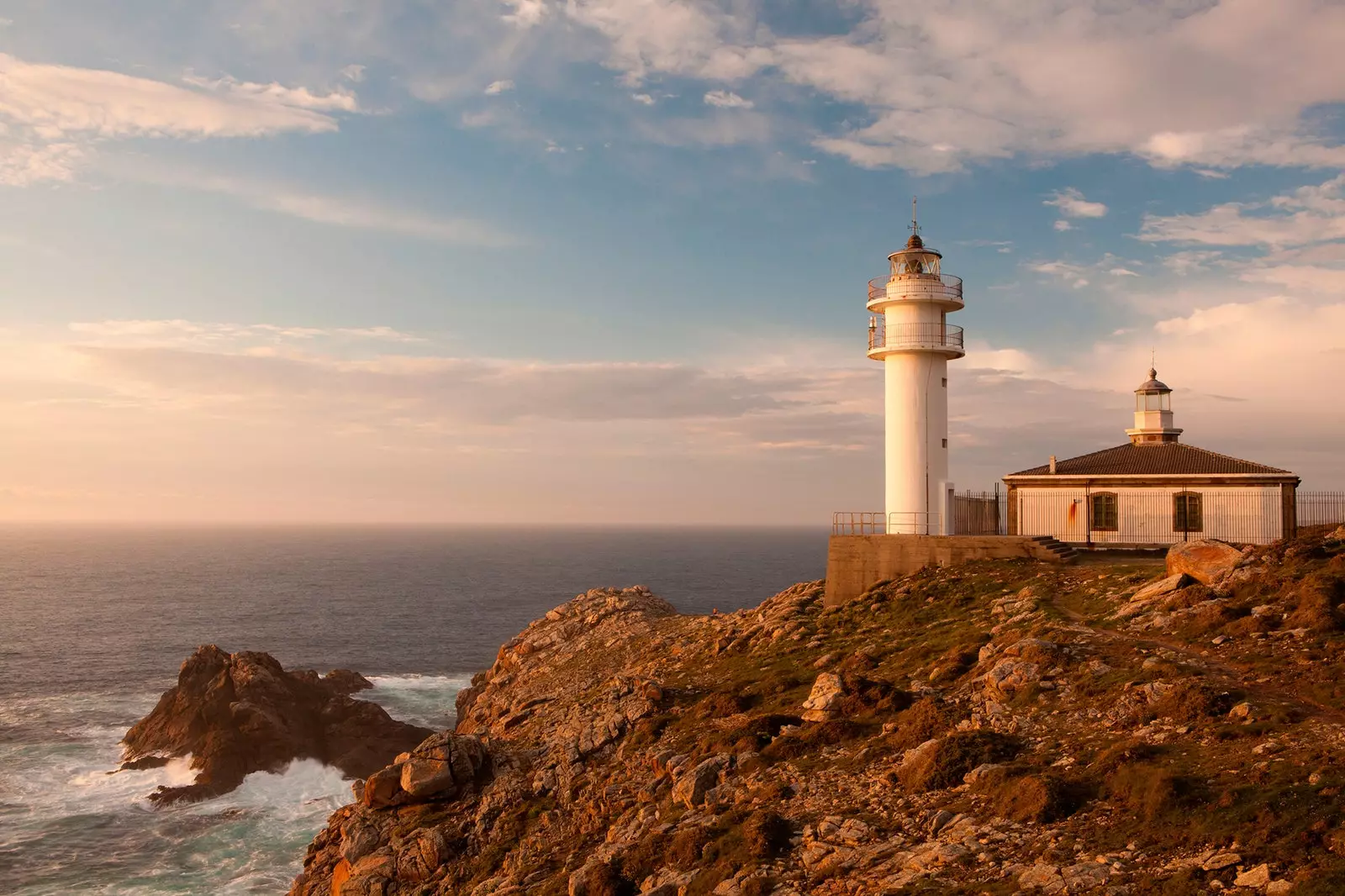
Sunset at Cape Tourin
The locality of Muxia , an obligatory stop for pilgrims on their way to Finisterre for its famous Virgin of the Boat , is today also the meeting point for sunset hunters who come to Touriñán. The small coastal town offers a careful hotel offer -full of unique rural houses- that will soon be crowned with the long-awaited national inn. Nor does it disappoint gastronomic proposal : seafood products share the menu in the port premises with sandwiches and international menus adapted to tourist palates.
In recent years, the conger eel has once again occupied a priority place in local gastronomy: the famous bilbilitana-style chickpeas , typical of the Aragonese town of Calatayud, were made with conger eel from Muxía.
The only two conger eel drying sheds in the entire Iberian Peninsula are still preserved here today. . A Casa do Peixe, more than a restaurant, also a small exhibition hall, could be defined as a living museum around the conger eel.
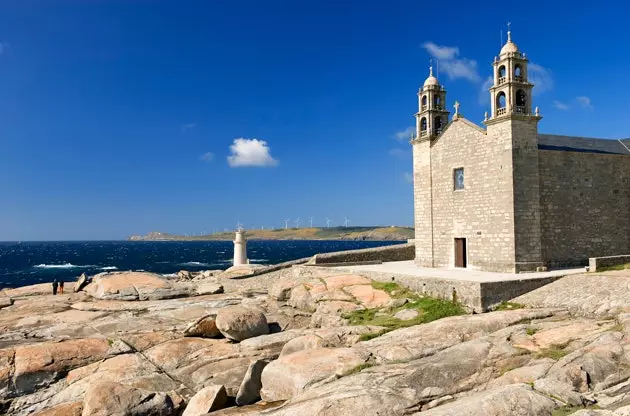
Virgin of the Boat, Muxía
Despite having less than 5,000 inhabitants, Muxía is a cultural haven for many artists. the japanese painter Yoshiro Tachibana resided here until his death in July 2016, and others like the German Detlef Kappeler or the sculptress and painter ** Viki Rivadulla ** maintains her workshops here. Muxía is, without a doubt, a place to be inspired.
The town is also the starting point for one of the stages of the Path of the Lighthouses , a route that will take us to Touriñán. From the coido beach , one of those sandbanks blackened in their day by the Prestige , we will move towards Lourido . Don't be fooled by the turquoise sea; after all these are still the raging waves of the Atlantic. From the top of Mount Cachelmo we can enjoy a magnificent panoramic view of Muxía itself, as well as Vilan or Camariñas.
The route to Touriñán reveals the Furna da Buserana , scene of the love legend between the troubadour Buseran and the beautiful Florinda, and Punta Buitra , an almost virgin beach, hidden by land and sea, which was used for years by the local drug dealers . From there, after passing through the also splendid beach of Moreira, we will have reached Touriñán.
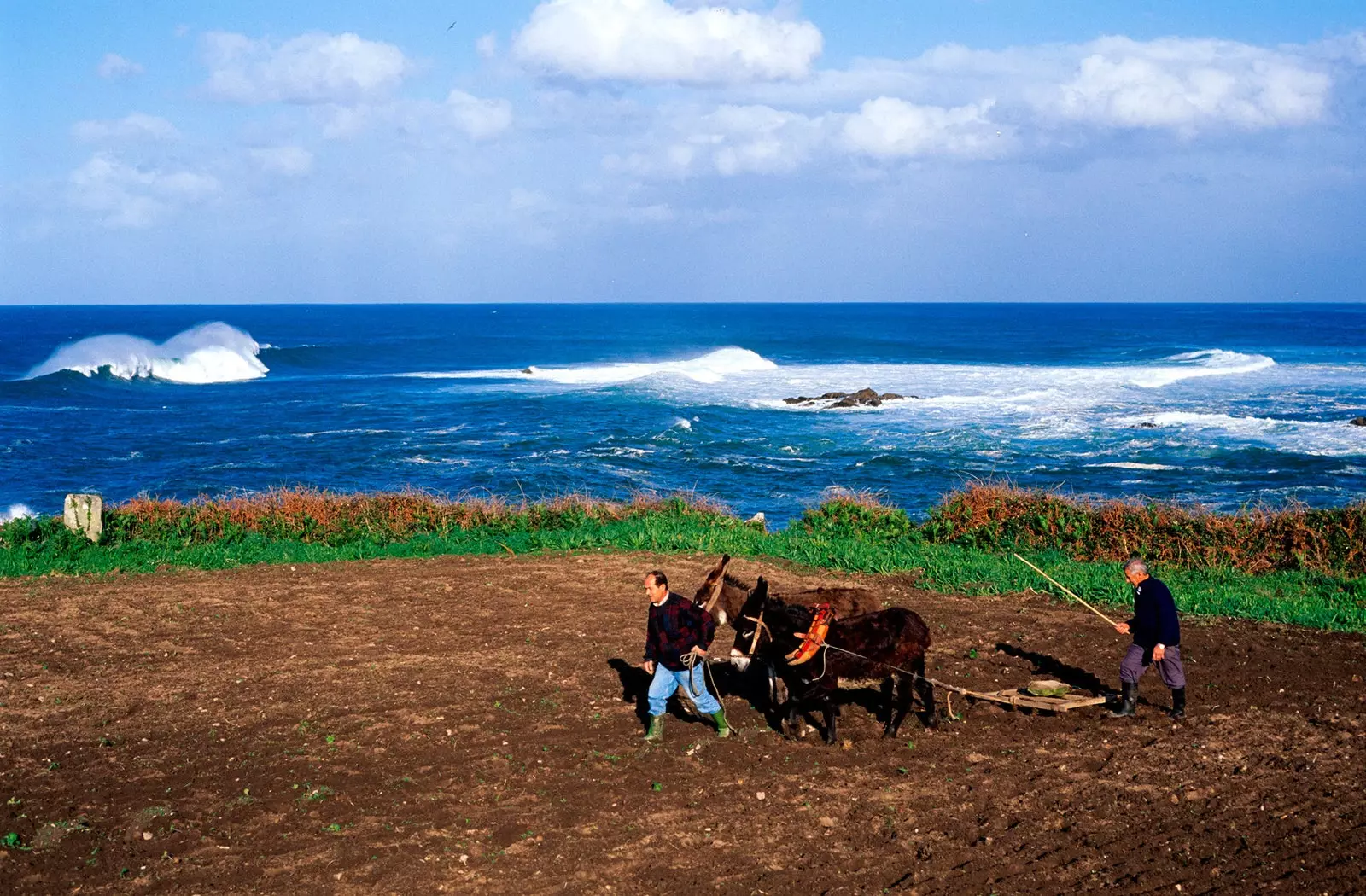
Farmers around Touri n
It is worth continuing the journey until Nemiña, 24 kilometers from Muxía , one of the most famous sandy areas in Galicia . A favorite destination for surf lovers (there are several schools in the area), it is a corner where you can walk and be impressed by the majesty of its dunes and the estuary of the castro river . If not because we have come to see the last sunset in Europe , there would be no better plan than doing it in one of the two bars that crown Nemiña beach.
THE SUNSET, ALONG WITH THE STORIES OF THE LIGHTHOUSE
The last sunset in Europe should arrive early. Move towards the old lighthouse , a square-shaped building abandoned at the beginning of the 1980s, currently replaced by an automated tower, and let yourself be immersed in the stories of one of the most fascinating corners of To Costa da Morte . Although it is summer, it is advisable to always dress warmly.
Touriñán does not bear the tragic fame of the great shipwrecks that gave this area of Galicia its name, but that does not mean that they did not occur. The most important was the German freighter Madeleine Reig that in a storm 1935 split the Galician fishing boat in two Oito Irmáns off the coast of Touriñán.
Twenty two years later, in 1957 , the same ship was shipwrecked in front of the cape, putting an end to a story that many sailors in the area still remember as a blow of karma by the sea due to the malignity of the Germans during the r rescue of the Oito Irmáns.
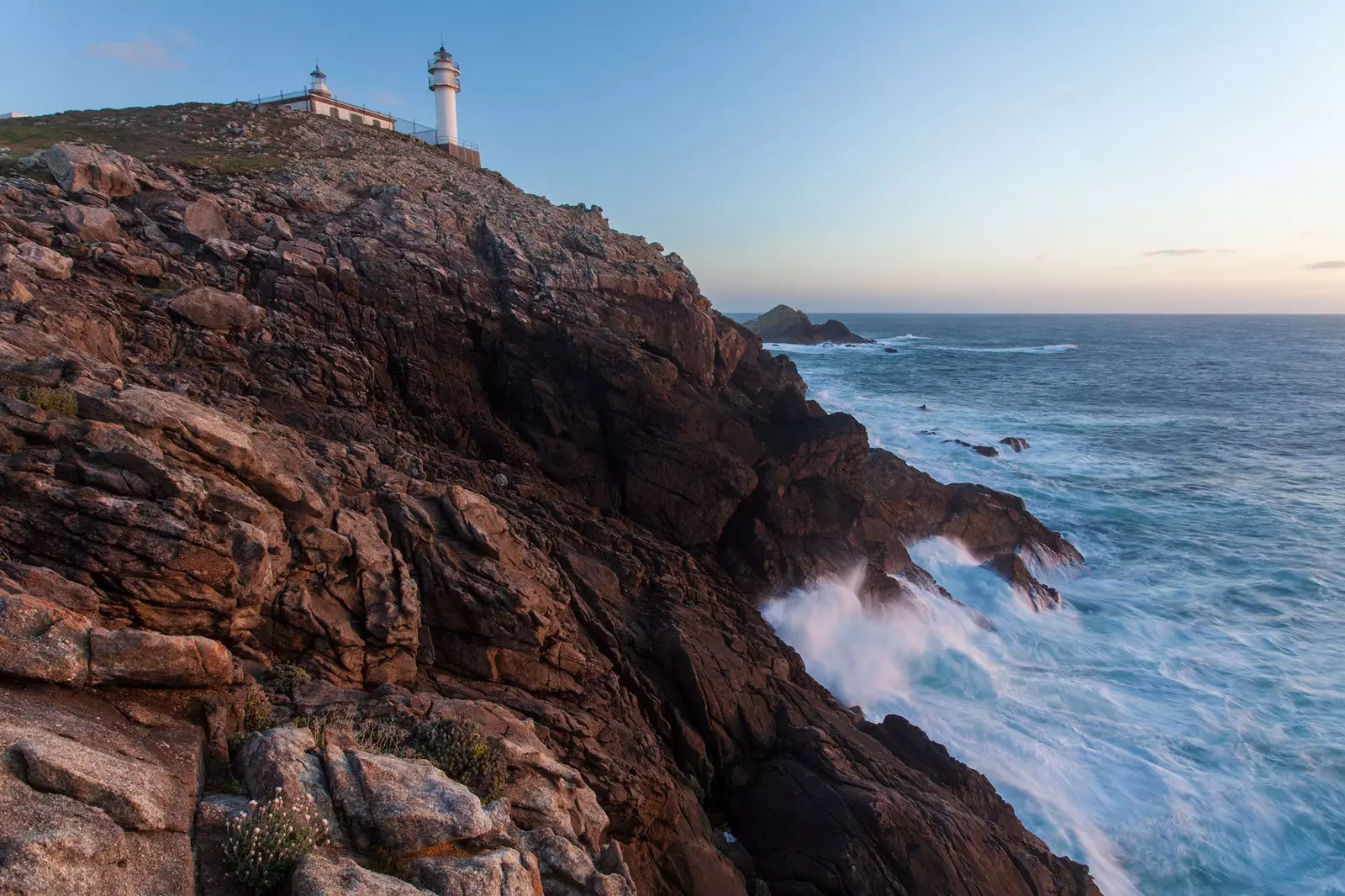
The sea, brave and relentless
Although probably the story that most attracts the attention of the traveler is that of the California steamship, torpedoed by a German submarine U22 off Cape Vilán and whose survivors ended up taking refuge in the house of the lighthouse keeper of Touriñán . Or also that of the numbers clashes that nazis and allies they had in these waters during the so-called ** battle of tungsten in the middle of World War II.**
And so, listening to stories as is always done in Galicia, the awaited moment arrives. That exact moment that we are so longing for. Europe's last sunset . It is worth photographing, but even more get lost over the horizon line.
